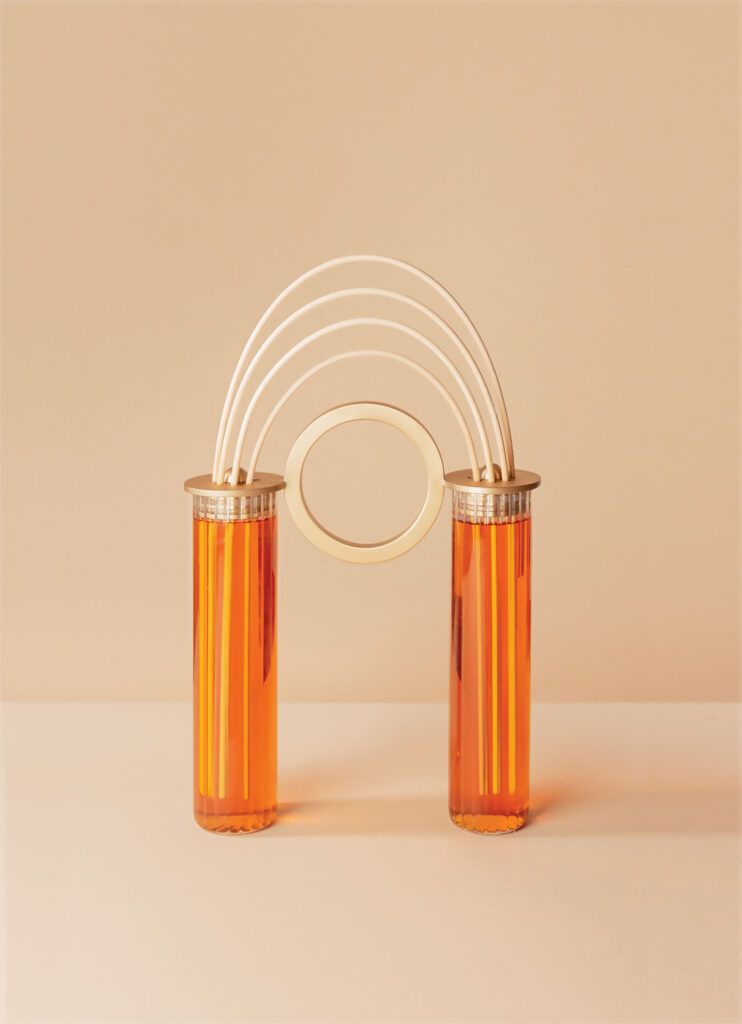An Exhibition Explores the Intersection of Scent and Design
Odors are perceived with every breath we take and immediately interpreted by the most ancestral parts of our brain. In recent years, researchers and practitioners, from the neurosciences to the humanities, have strived to gain a better understanding of the sense of smell, which deeply, yet often unknowingly, shapes the way we live: our eating habits, our social interactions, our emotions, memories, and even our well-being and safety. Albeit elusive and ephemeral in nature, scents may thus be purposefully used to improve many aspects of our lives. Furthermore, despite its long neglect in the West, smell can also carry cultural, aesthetic, and practical values, as exemplified by a number of ancient and foreign cultures.
In the hands of contemporary designers, whose job it is to consider the interactions of minds, bodies, and things, scents are mediated in innovative ways to raise a form of new sensory awareness. This exhibition will feature about 40 of these designers and artists from all over the world whose work reflects and participates in the growing culturalization of all things olfactory. Working with and around the sense of smell, taking into account its neurobiological, historical, social, and aesthetic specificities, these practitioners attempt to change the way we relate to and interact with the world. Their informed efforts are an incentive to use our nose to observe objects from a different point of view, and conversely to use objects to take advantage and make sense out of smell in novel ways.

The phrase ‘olfactory design’ can refer to a variety of practices that encompass, inter alia, fragrance making, olfactory marketing, stage design, architecture, and even urban planning. The focus of Living with scents will be on objects, not just scented products, but creative and artful interfaces to deliver scents with manifold design outcomes, from the hedonic to the functional. On display will be an unprecedented collection of useful, meaningful, and beautiful olfactory objects to be discovered through both the eyes and the nose.
After years of research into the design of the five senses, Elisabetta Pisu and Clara Muller have curated Living with Scents at San Francisco’s Museum of Craft and Design.
“Through the olfactory sense, we can interpret and learn about the world, fixing in our memory places [we’ve been] and the emotions we’ve lived,” says Elisabetta Pisu, design curator, founder, and project manager of EP Studio. While ephemeral, scents can dramatically shape the way humans live in and experience the built environment. “For this reason, ambient scent has become very important and constitutes an integral part of the research planning for many designers.”
After years of research into the “design of the five senses,” Pisu and olfaction scholar Clara Muller have curated Living with Scents, a new exhibition at San Francisco’s Museum of Craft and Design. Featuring the work of more than 40 international artists and designers, the exhibition examines the neurobiological, historical, social, and aesthetic implications of smell through objects. Works on view include a coffeepot 3D-printed from coffee grounds, a clock that releases a different essence every hour, and jewelry that provides a solution for those allergic to perfume.

TEMPLE ROOM DIFFUSER In 2018, Italian designer Sara Ricciardi created a collection of room diffusers inspired by the architecture of Greek and Roman temples for the fragrance brand CULTI Milano. Designed to resemble a Doric column, each device features borosilicate glass tubes that contain the fragrance and curved rattan sticks that diffuse the liquids. Ricciardi is one of more than 40 designers whose olfactory objects are on view in the exhibition Living with Scents, at San Francisco’s Museum of Craft and Design. COURTESY SARA RICCIARDI

In 2013, Antwerp, Belgium–based product design studio Unfold developed The Peddler for perfumer Barnab Fillion (above). The series of three 3D-printed ceramic diffusers and receptacles were designed to resemble alchemical tools and utensils. Tokyo-based studio Nendo designed Scent, a series of glass vases (top) in 2020, crafted to exude the aroma of flowers or fruit. COURTESY MARIE TAILLEFER
Source: Metropolismag.com & sfmcd.org
